How To Use Nd Filter
ND Filters – In Depth Guide For Beginners
In this tutorial, I'm going to give you a guide to ND filters in photography; what ND filters do, what ND filters to purchase, what effects they create so on. I've also created an ND filters guide that you lot can download and go along. This volition help you work out shutter speed times using our exposure calculator and advise on what ones to buy.
If you're thinking of buying or using ND filters to create long exposure effects, and so this tutorial is for you.
The Guide and Exposure Calculator tin be found beneath.
What practice ND filters practice?
They assist you lot create images like this….
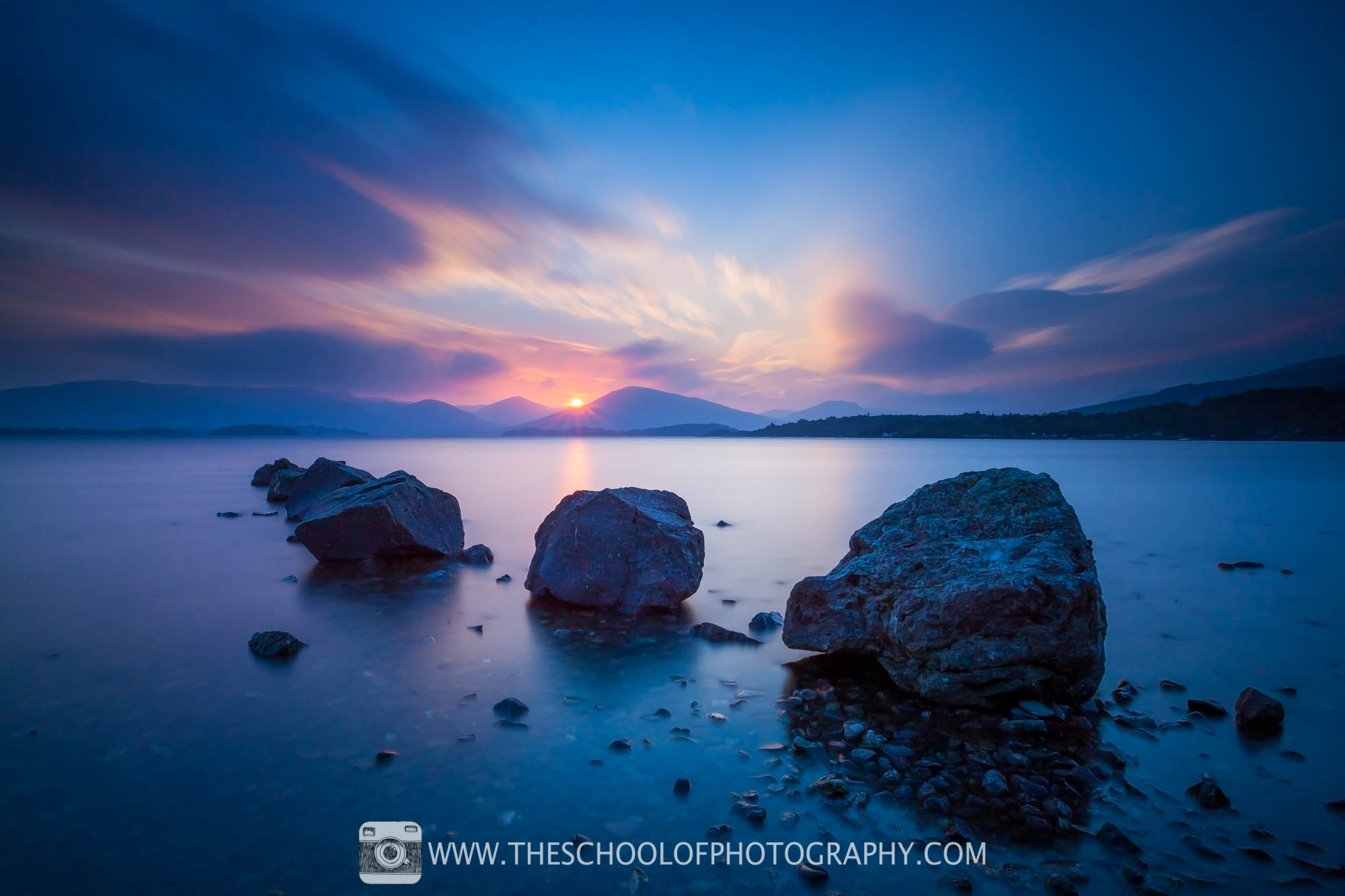
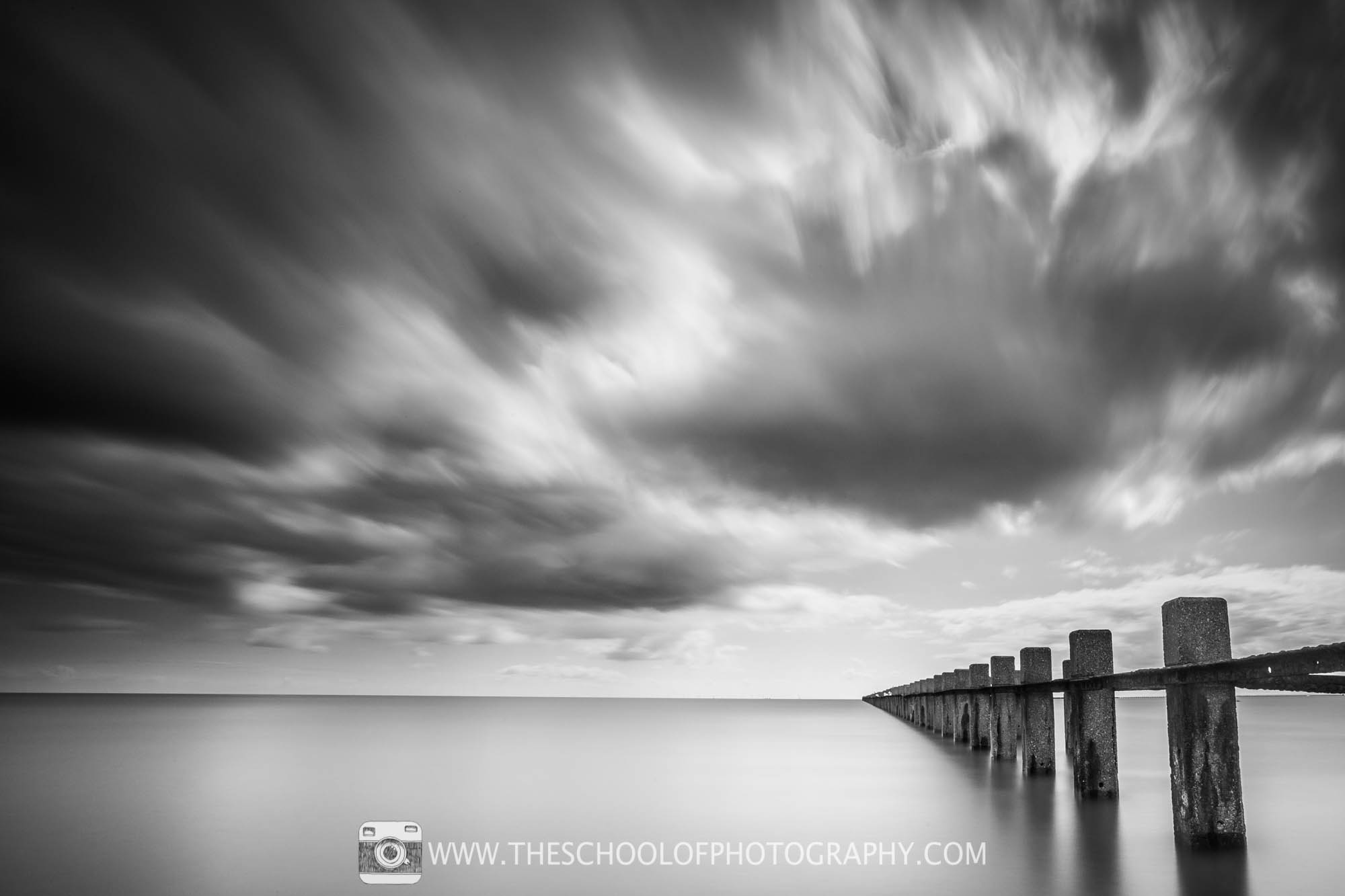
An ND filter acts similar sunglasses would to your eyes, information technology blocks light coming into the lens like sunglasses blocks light coming into your eyes. ND stands for Neutral Density which means information technology blocks the lite in a neutral way without changing the color of the light.
Get admission to ALL our online courses – 1000's of videos, worksheets, critiques of student's work, personalised support and much more with our monthly membership.
Why would you want to block low-cal coming into your lens?
Light is adept, right? It's what makes the prototype. It makes sense to call up that if you block lite coming into your lens you're but going to make a nighttime, underexposed epitome.
Well, when y'all block lite coming into your lens you're are forced to expose the photographic camera to low-cal for a longer period of fourth dimension. You have to open up the shutter for longer to allow for the right amount of light to enter the camera.
Let's await at the event an ND filter can take on an image. Below is a normal picture with no filter, taken using a tripod at 1/30th of a 2d. You can see the ripples in the water and the clouds wait clear, everything has been frozen for that fraction of a second. Exposure details - 1/30th sec, f22, ISO 400
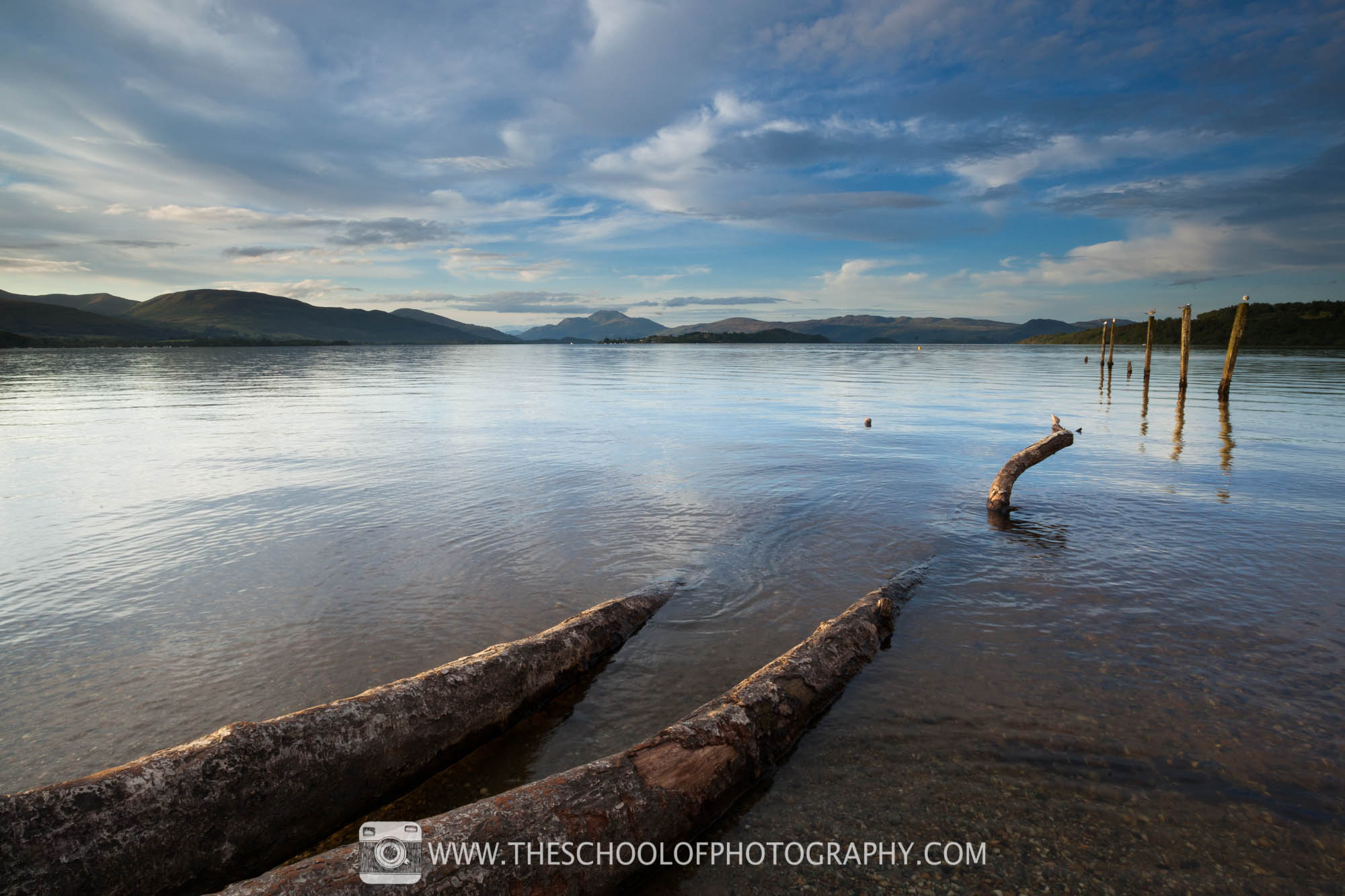
1/30th 2d – f22 – ISO 400
And hither is a shot taken just after that one using a 10 stop ND filter. The filter has allowed me to increment the exposure fourth dimension to 30 seconds. I've still exposed the camera to same amount of light, but this 1 has been exposed over a longer catamenia of fourth dimension. When yous exercise that everything that'southward still, stays even so, i.due east. the tree and mountains and everything that moves blurs or blends together. This shot has besides been adjusted in Lightroom to pump up the colours and contrast. Check out my other tutorial on how I arrange images in Lightroom if you lot wish. thirty Secs, f22, ISO 400
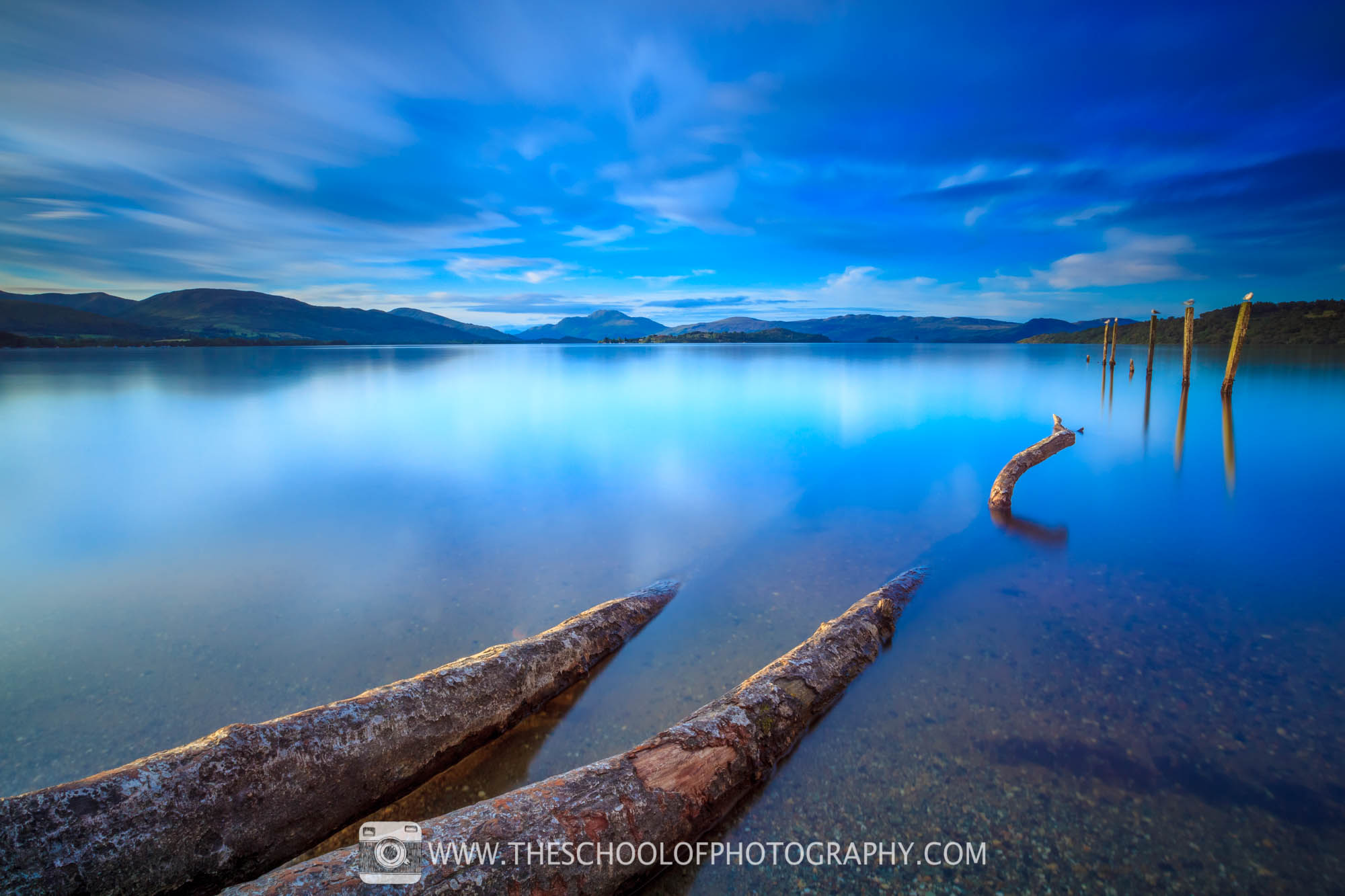
30 seconds – f22 – ISO 400
Let'southward wait at them both together. The one on the left, shot at 1/30th of a second, the one on the right, shot at xxx seconds with a ten stop ND filter on. Again, they have both been exposed to exactly the same corporeality of calorie-free, but with the ND filter on you lot able to permit that light in slowly which allows moving things to mistiness, such as the clouds, and it besides allows things to alloy in, such every bit the ripples in the water. Also annotation that information technology is but the shutter speed that has changed. The aperture and ISO stay the same when you lot are doing these shots and you must shoot in fully manual way. I cover that in much more item in my other tutorial 'How to use ND filters'.
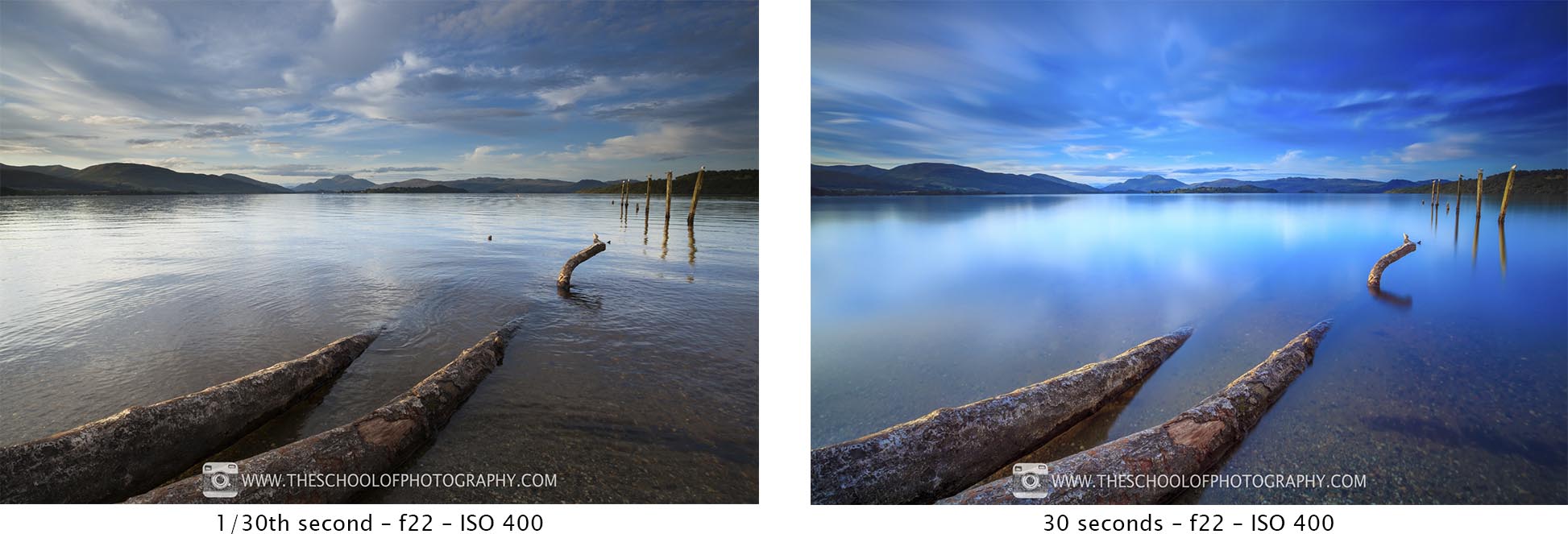
ND filters come in all shapes and sizes
Spiral on Blazon
Ones that spiral onto the forepart of your lens, ones that need to use a filter holder system and graduated ND filters, with the graduated ND filters it'southward best to utilise a filter holder organization.
The spiral in types are very skilful value for coin (around £ten or $15 each), you tin get lots of unlike brands of these and they all practise pretty much the same thing. If you're but starting out I recommend getting 1 of these types that will fit your widest-angle lens or your standard zoom lens, this will exist great for getting those long exposure mural shots.
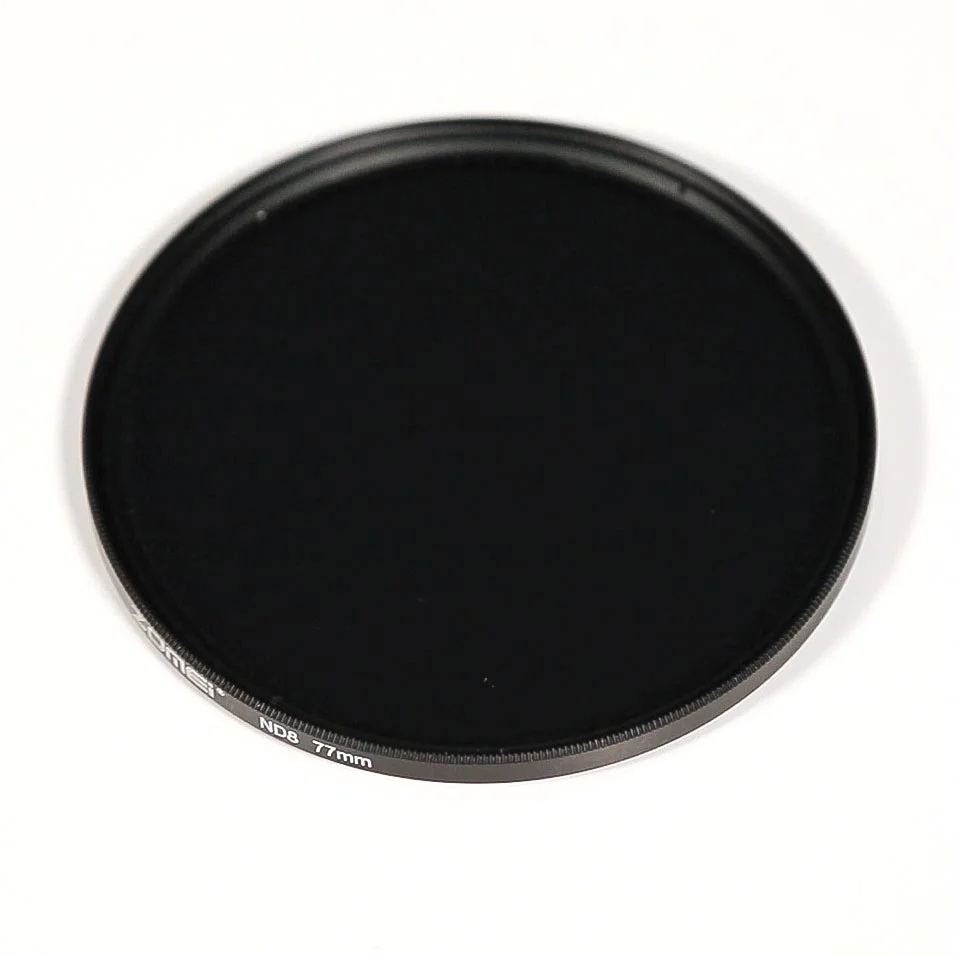
Screw on ND Filter
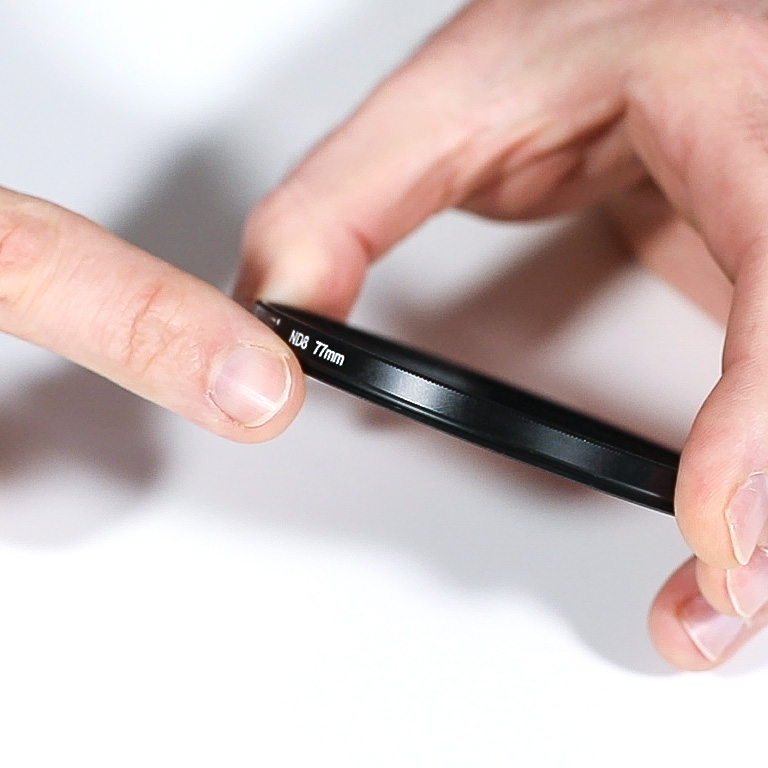
77mm size filter
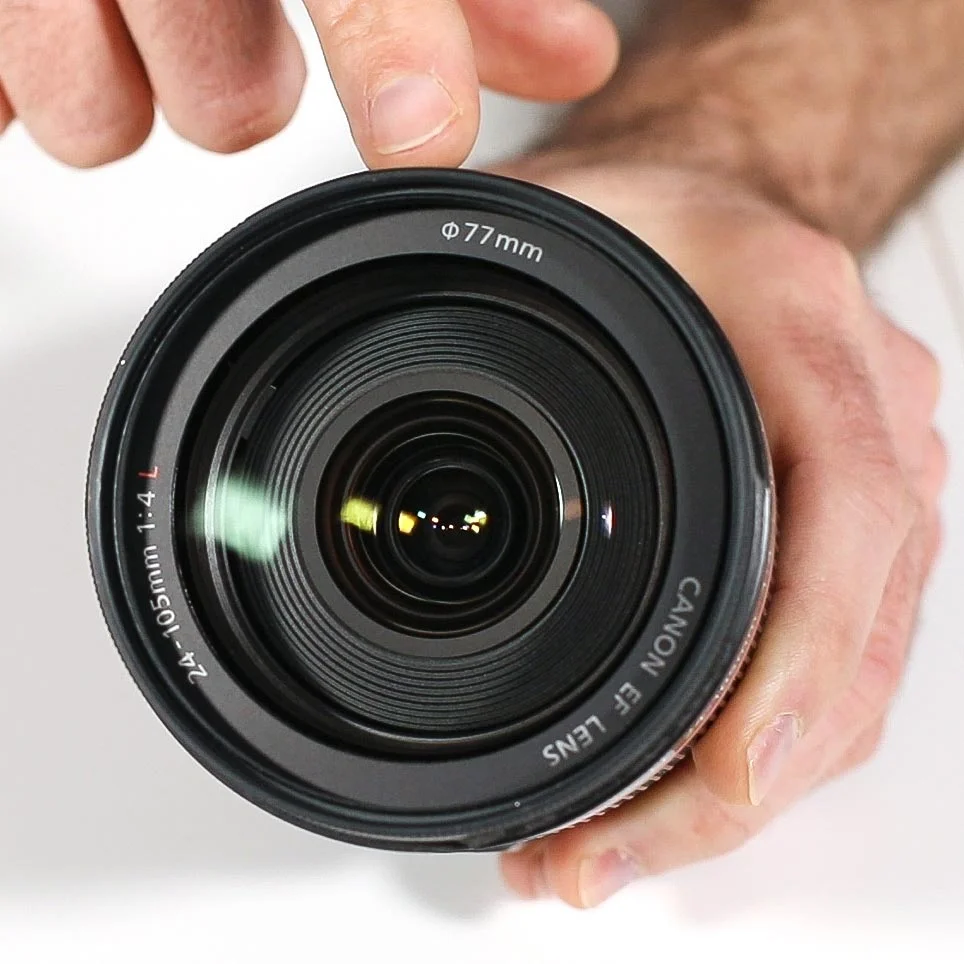
To fit a 77mm diameter lens
The filter holder blazon
Cons - A lot more expensive. This system is for a commitment to this type of photography, or for those who have the coin to spare – the other is for a practice or play around.
Pros - Better quality. You can apply them with other lenses merely you will need an adapter band for different lens. You lot can use ND filters in conjunction with other filters like the ND grad filters.
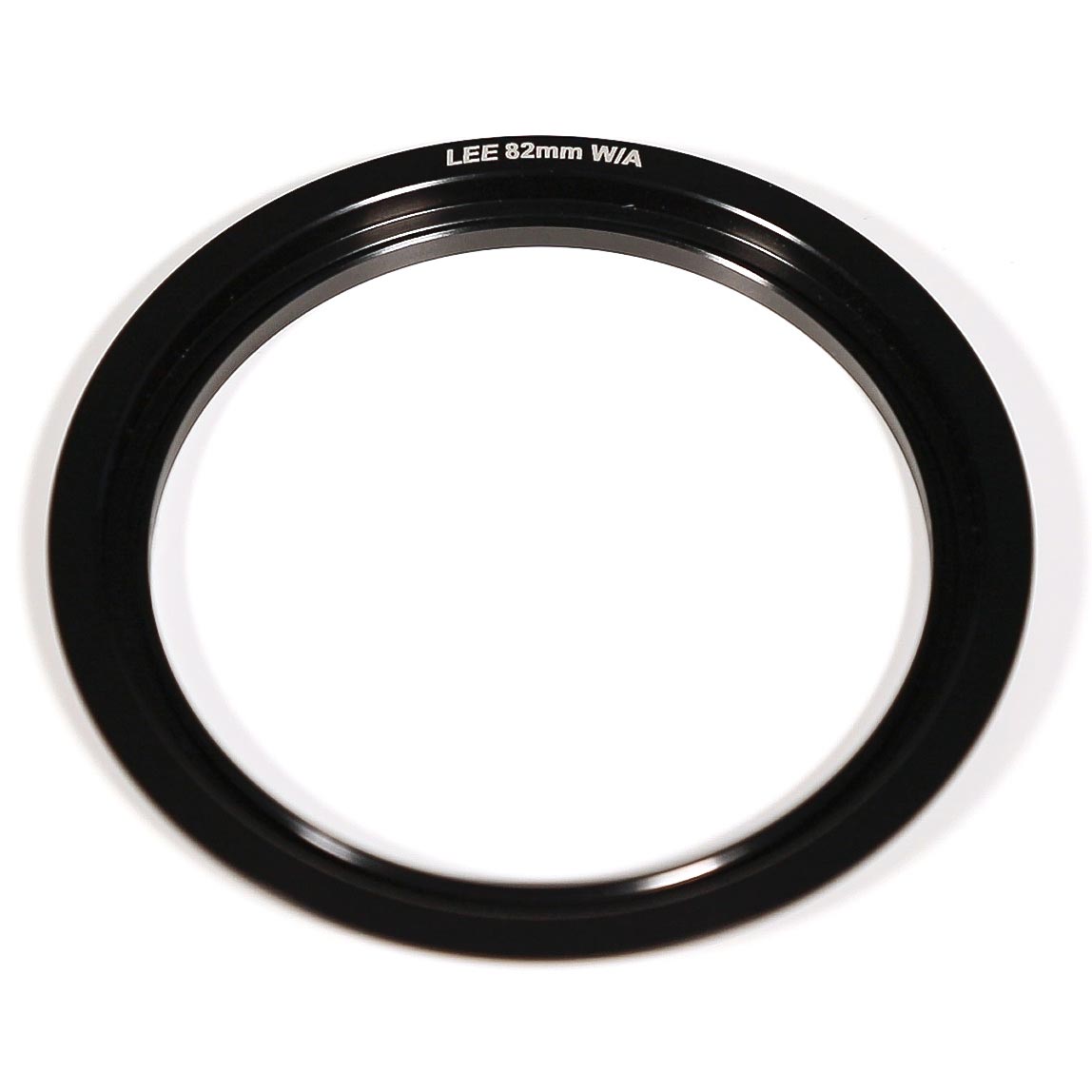
Filter adapter ring
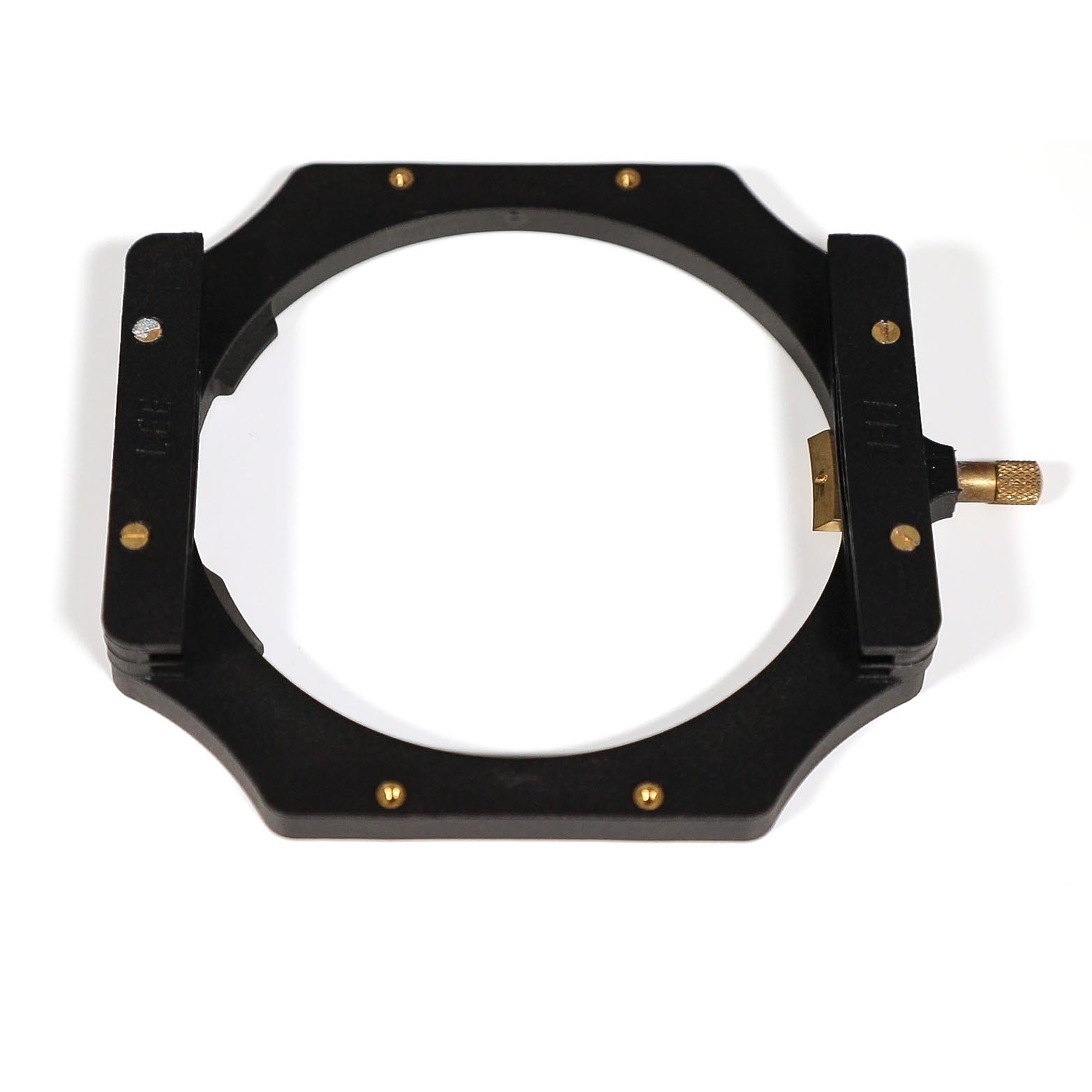
Filter holder
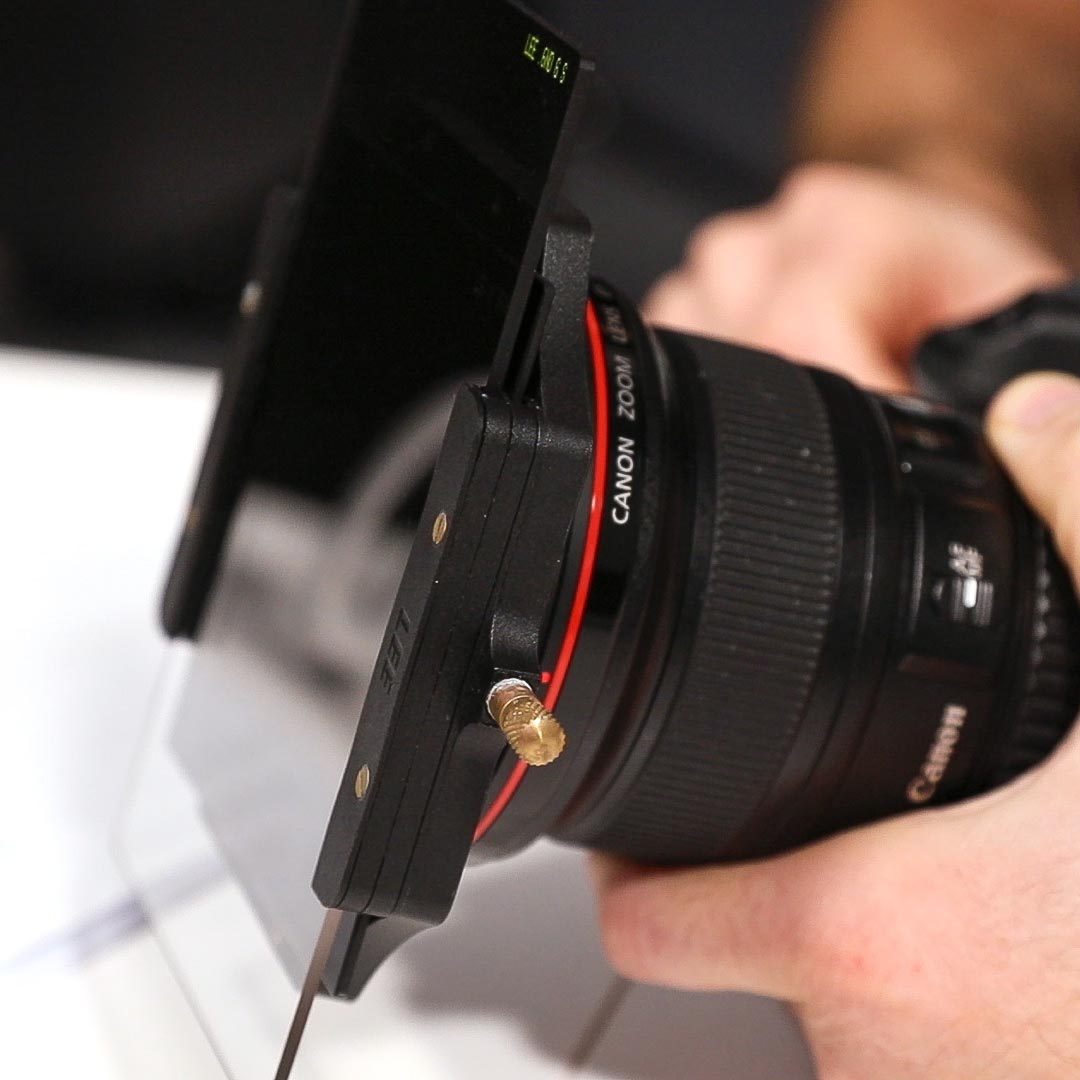
ND Filter Holder System
Brands
In that location are many brands and they are all pretty good. Here are some brand names - HiTech, Lee, Nisi and cokin, the latter being the more upkeep brand.
ND Grad filters
ND Grads are mainly used to darken downwardly skies and balance out your exposure.
Below is an case using a hard grad ND filter. The one on the left is a normal picture shot using the photographic camera's congenital in light meter. This is what the photographic camera thought was the correct exposure. The one on the right with the ii terminate hard grad ND filter. This has darkened the sky by 2 stops to requite a much more balanced exposure.
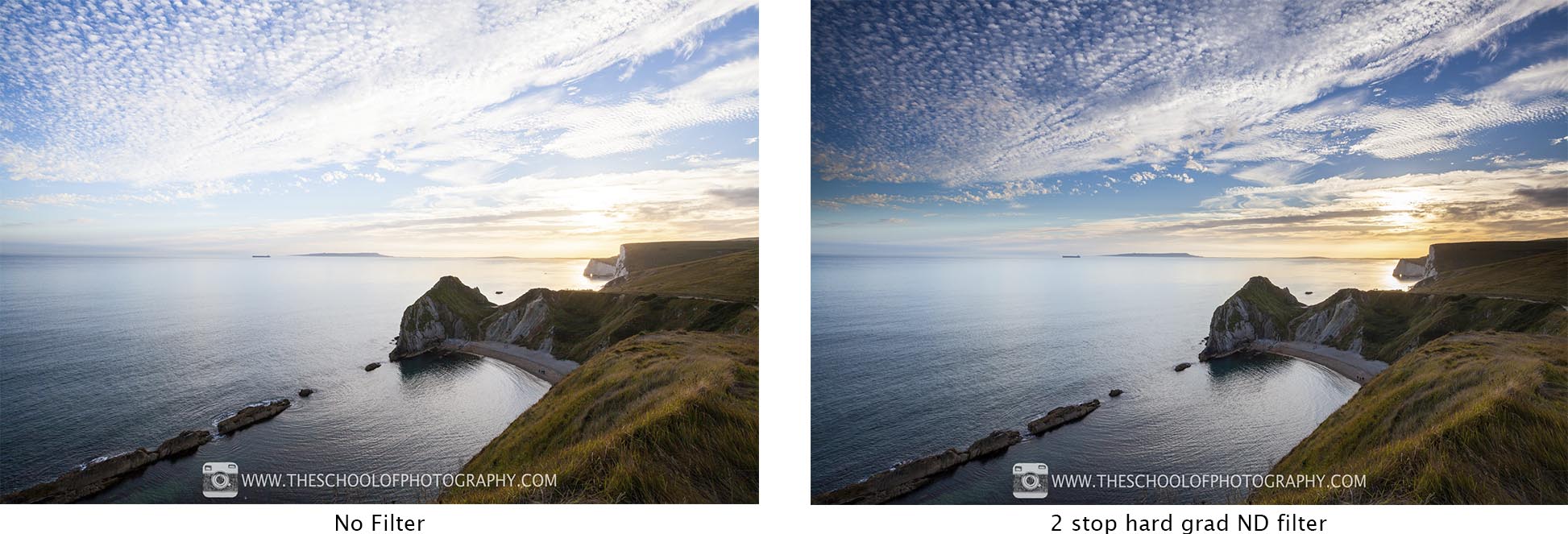
Then, using the filter holder system, yous tin can add a 10 stop ND filter together with the ND hard grad, add some Lightroom and Photoshop trickery to information technology and you tin can get a shot like this.
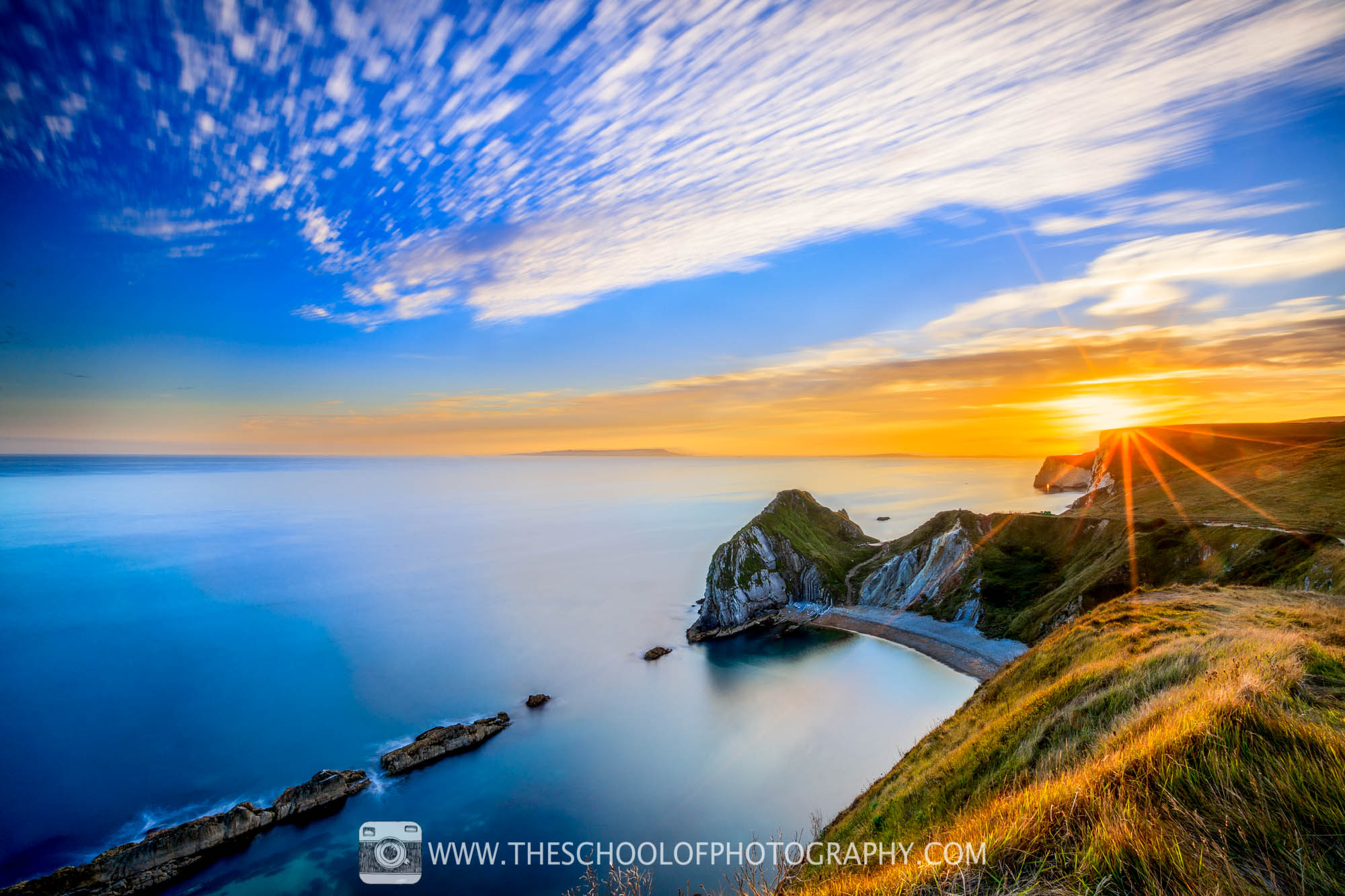
2 stop hard grad ND filter and a 10 end ND filter
Different strengths of ND filters
ND filters are created in stops. A stop in photography is either halving or doubling the amount of light e.chiliad. making the film one stop darker or one stop lighter. In the case of ND filters, you are always halving or reducing the amount of lite. So a 1 finish ND filter will be stopping the light by 50% or half. A 10 cease filter is stopping the light by x halves in a row. You have to practise it sequentially, that's important.
Retrieve when yous're doing long exposure shots it'south but the shutter speed you want to be changing. If you have a 2 second exposure without a filter, and then you put a 1 stop ND filter on, you take effectively halved the amount of low-cal coming into that camera. So to counter remainder this yous accept to increase the amount of time you let calorie-free into the camera, in this case by doubling it. See tabular array below.

Calculation a ane terminate ND volition half the light
That'southward the basic principle of ND filters, they end light coming into your photographic camera which forces you lot to recoup by letting in light over a longer period of time. The table below shows this with a 1 second exposure calculation unlike strengths of ND filters. Observe how the new exposure times double sequentially. E.g when you add a four finish ND filter you lot have to double the original exposure 4 times.
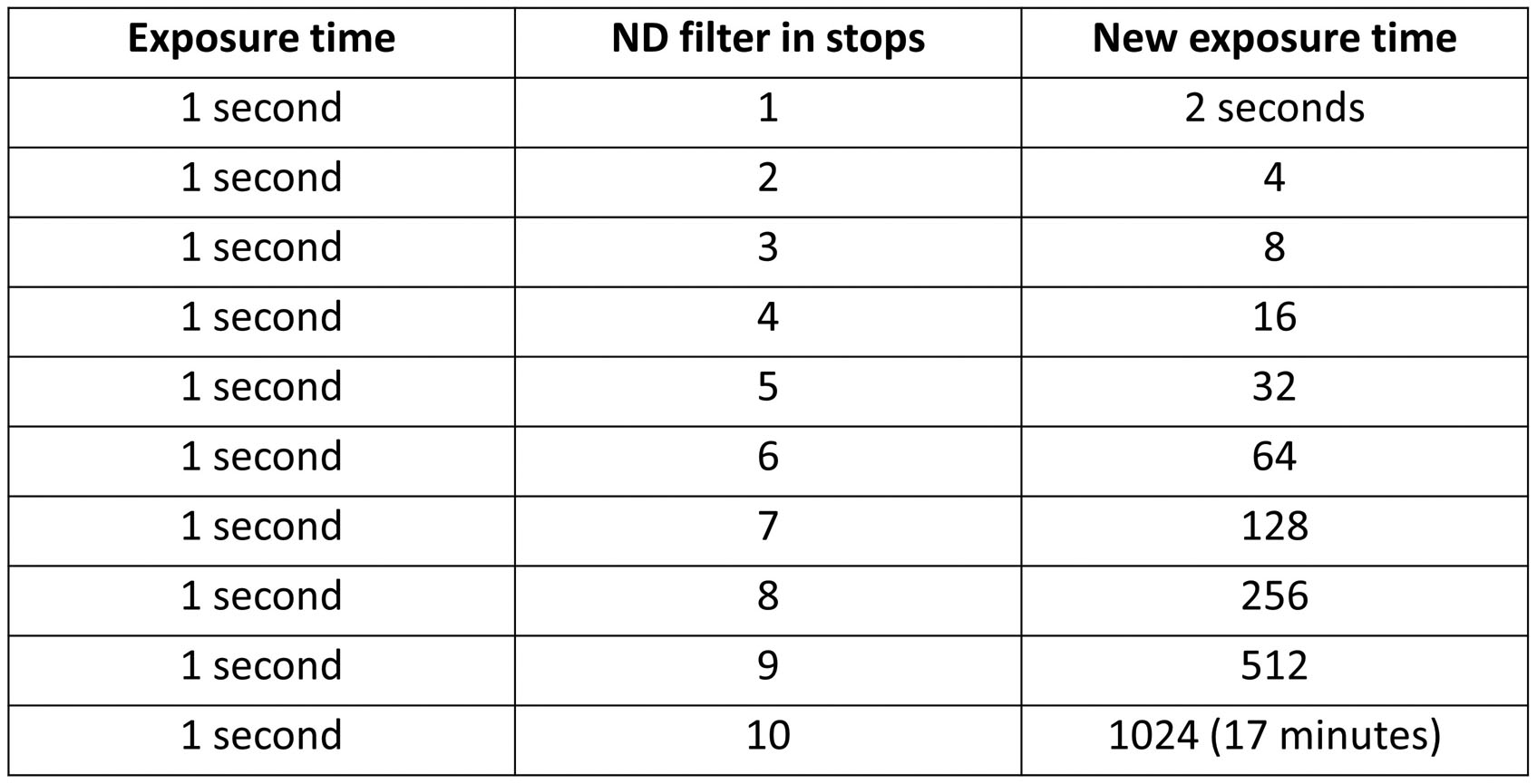
Unlike ND filters with calculated exposure times
Different numbers for stops
But to confuse you more, different manufacturers will advertise different numbers for stops. For case, instead of saying a two stop ND filter, they might say information technology has an 'optical density of 0.6' or a 'ND factor of 4'. To aid yous out with this here is another table giving you lot all these different numbers which hateful the same matter.
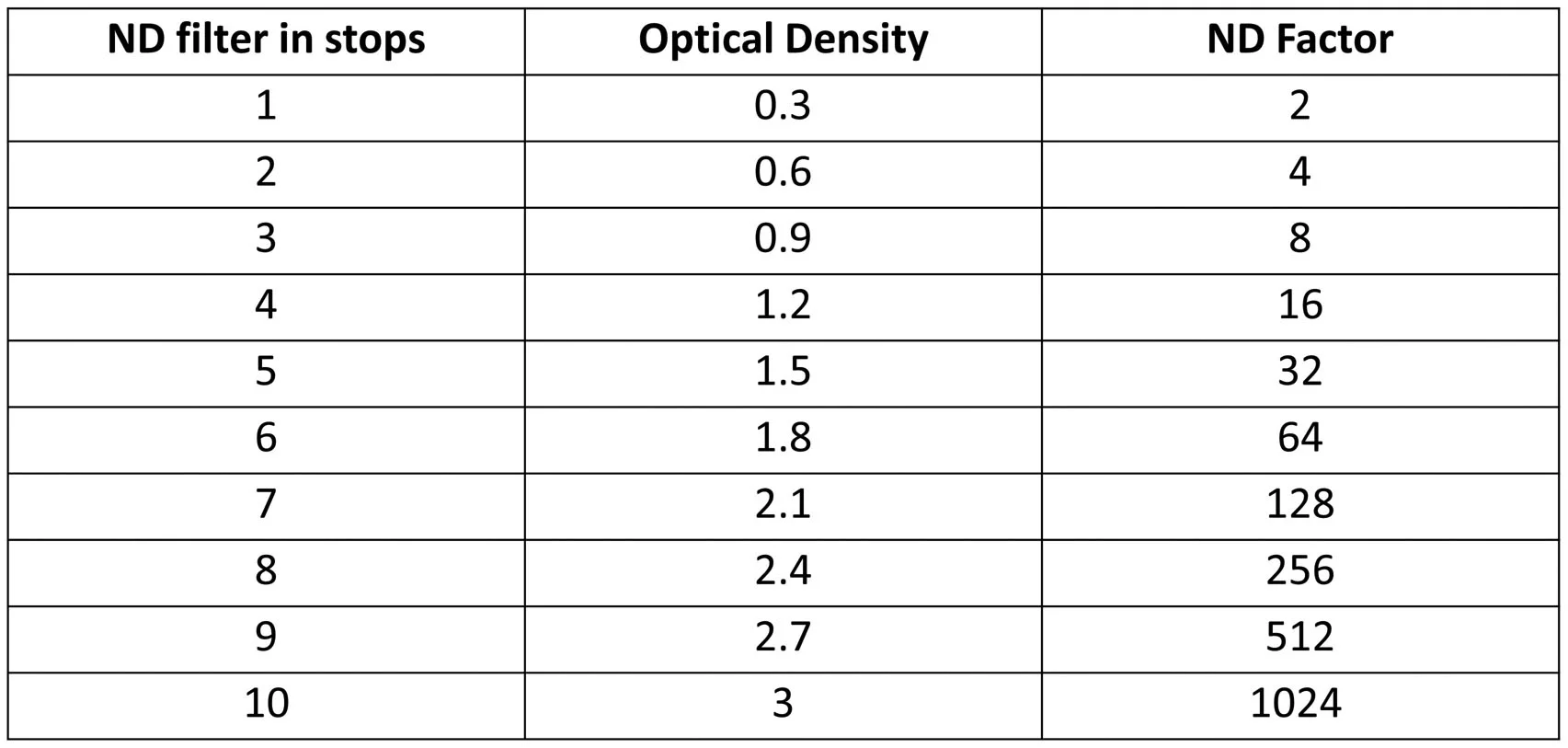
Stops, Optical Density and ND Cistron equivalent nautical chart
My best advice for y'all is to only stick to the stops, how many stops does the ND take.
What filter is best to use?
For long exposure shots like below with clear water and blurred clouds you will want a half-dozen stop or x stop ND filter as this will give yous an exposure time of at least thirty seconds and upwards to 4 minutes. The higher finish filters will enable yous to become those long exposures.
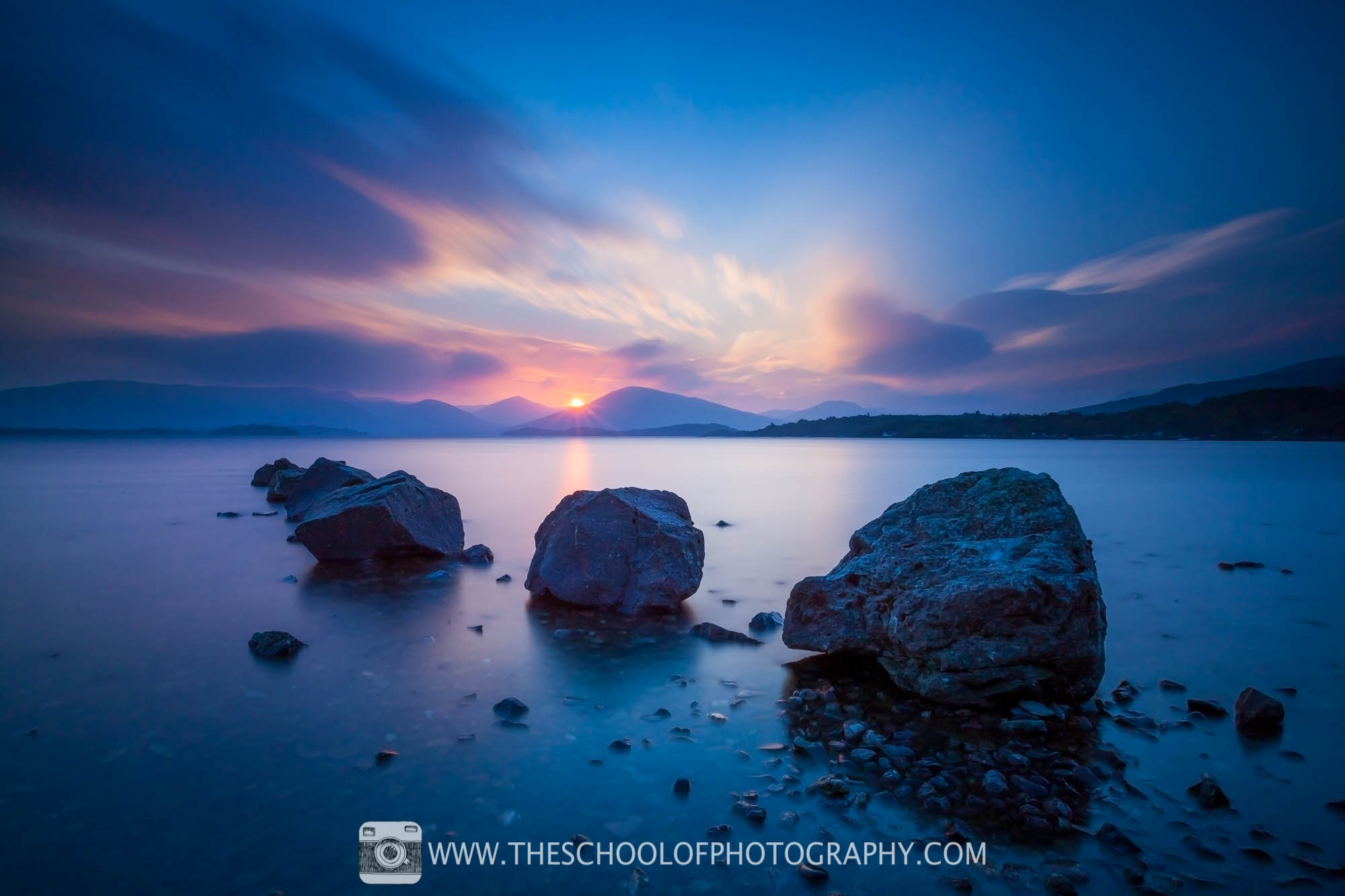
Shot using a 10 stop ND filter
Then for shots similar the i beneath you lot will want a ii stop filter. This was shot at 1/15th of a second in the centre of the day. Because in that location was a lot a light I needed to end the light downwards slightly and so I could open my shutter for longer.
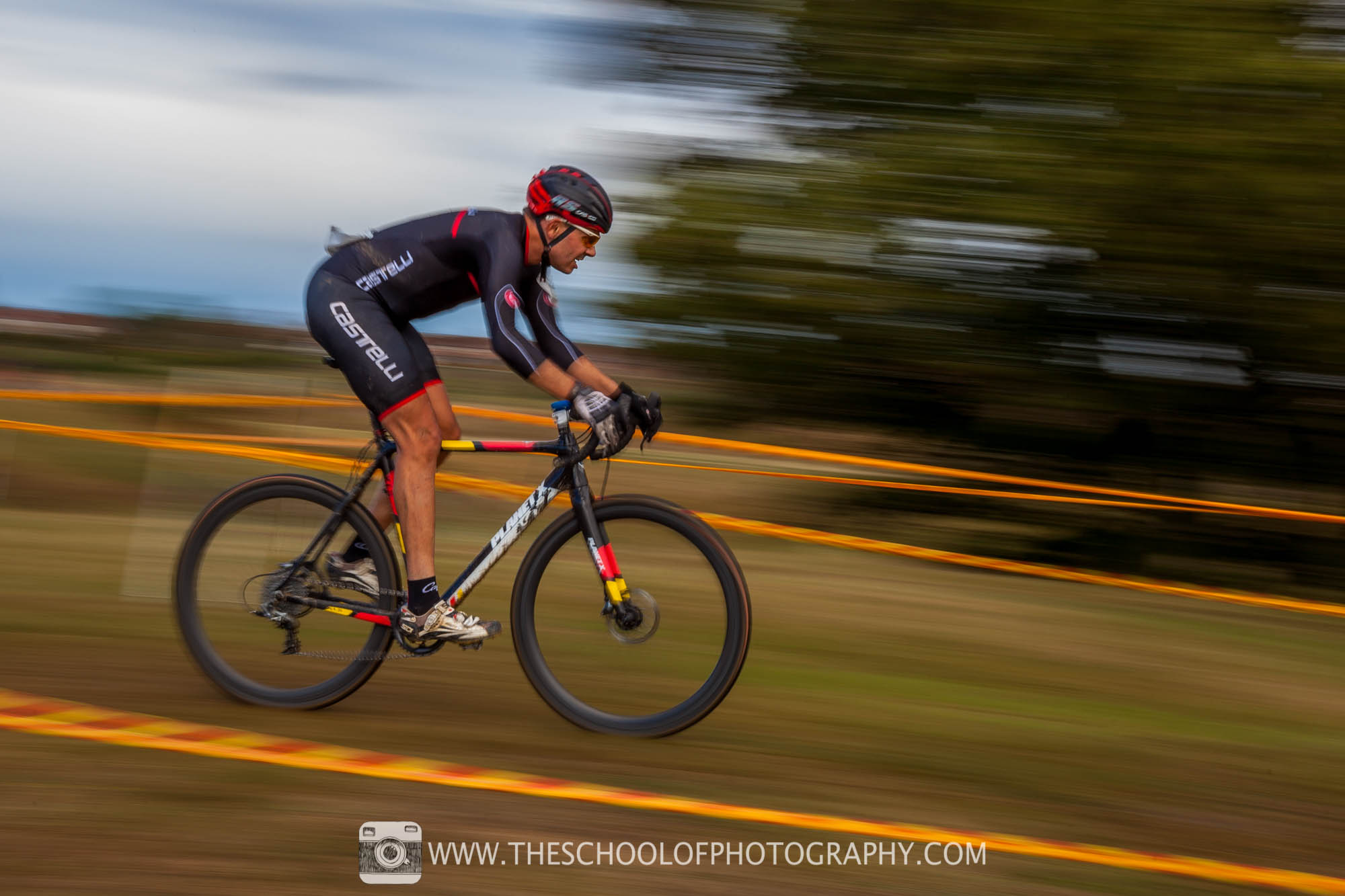
Shot using a 2 stop ND filter
Equipment you will demand
A good sturdy tripod is a must. You'll need a bit of weight so information technology holds your photographic camera firmly and all the same for long periods of time.
Y'all will also need a cable release or remote trigger. This is so you can employ your camera on a setting called seedling. I'll teach you all about bulb in the side by side tutorial when I'm out and about. You tin go these quite cheaply of the internet, just type in 'cablevision release for …..your photographic camera model.
I besides recommend you lot avoid variable ND filters. It'southward harder to estimate your exposure times with these types and on its strongest setting you can sometimes get lines going through the image. I would recommend getting a 10 terminate and a 6 stop filter to get you started. You'll accept loads of fun with them.
There are lots of different ND filters brands and kits out there. Nosotros desire to recommend to you what we think are the best whether you are on a budget or not. We have only recommended companies that nosotros or our colleagues use.
Recommended Nd Filter Kits
When is best to employ an ND filter?
If you want that drinking glass looking effect in the water you need the water to be adequately yet and calm, just slight ripples is perfect. Big crashing waves and crude seas will not work that well for this smooth glass effect. Also accept a few clouds in the sky, this will give the shot texture. A fully overcast 24-hour interval will just give y'all a gray heaven and although clear skies can await good a bit of texture up there adds to the shot. And endeavour to catch the sunrise or sunset. Midday light will exist likewise white and may even exist also bright to get a thirty 2nd or in a higher place exposure.
And there you go, ND filters explained. Don't forget to check out the 'How to use ND filters tutorial', where I'll be out in the field using them. You tin can too download the gratis Guide to ND filters via the link below.
Like this? - Bank check out similar tutorials beneath
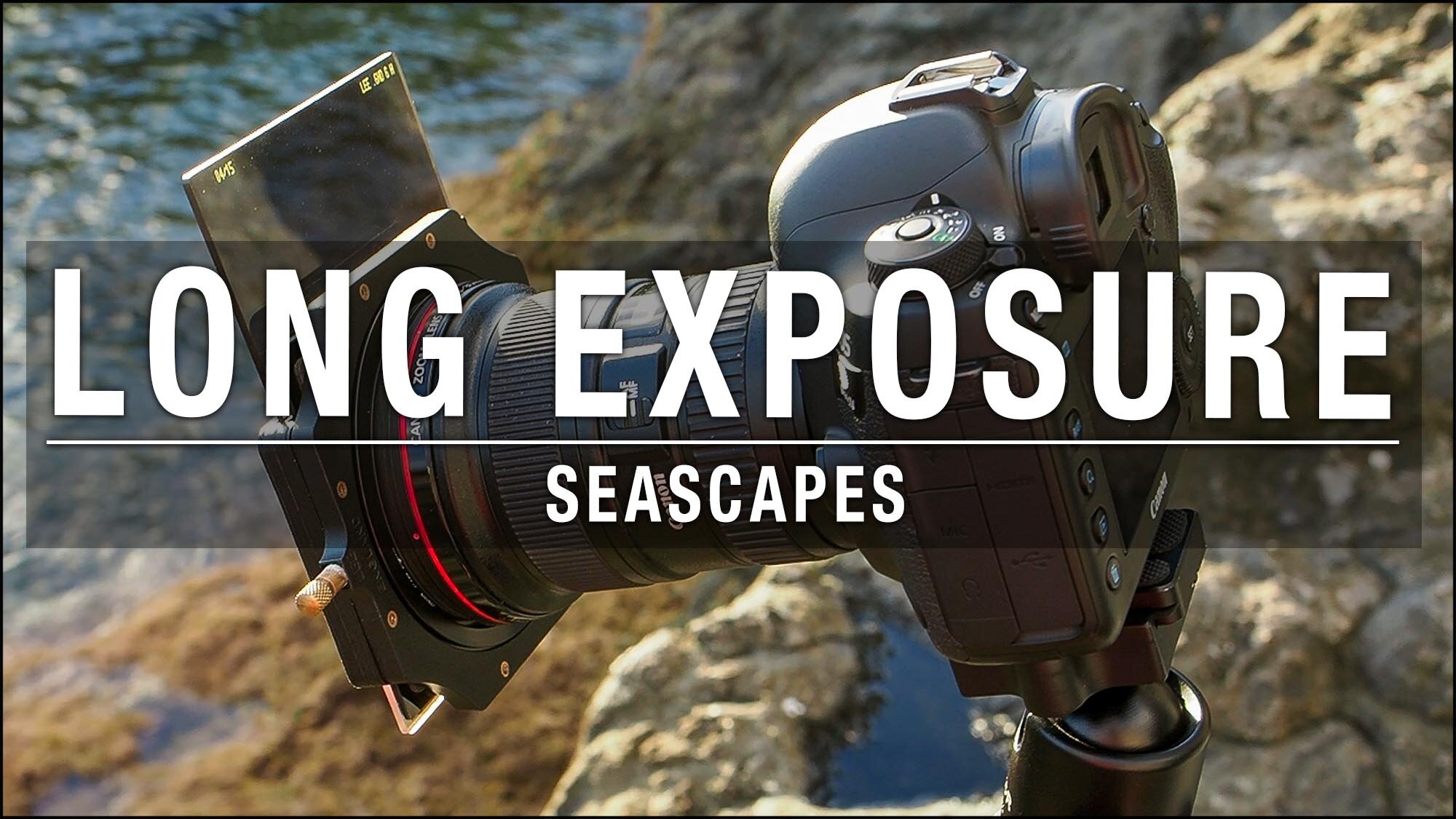
Long Exposure Seascapes - My Techniques
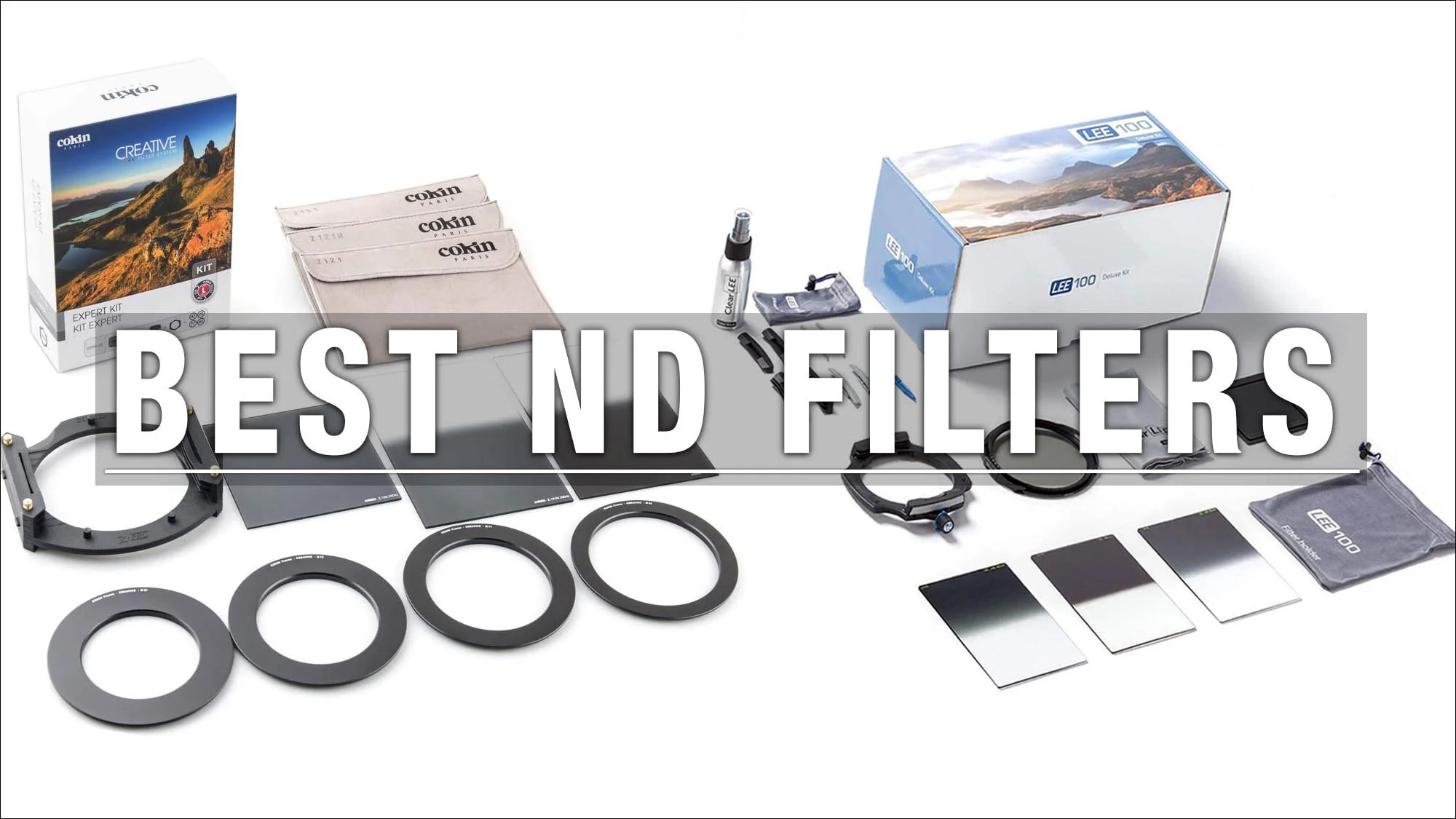
I hope you liked this video, please leave usa a comment and support u.s. by sharing information technology with your friends and subscribe to our newsletter at the bottom of this folio for more.
We likewise have an first-class learning customs on social media so please join us there as well.
Thanks for watching and call up – Learn more than at The School of Photography.
How To Use Nd Filter,
Source: https://www.theschoolofphotography.com/tutorials/nd-filters-in-depth-guide-for-beginners
Posted by: rileynoweapping.blogspot.com


0 Response to "How To Use Nd Filter"
Post a Comment